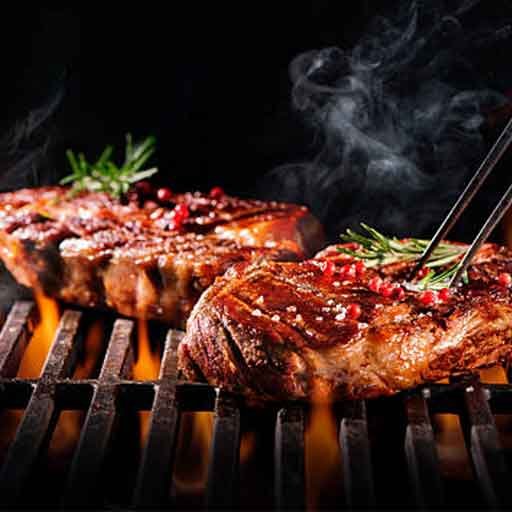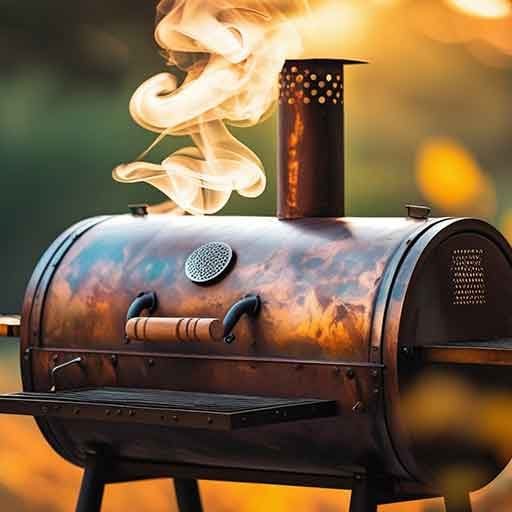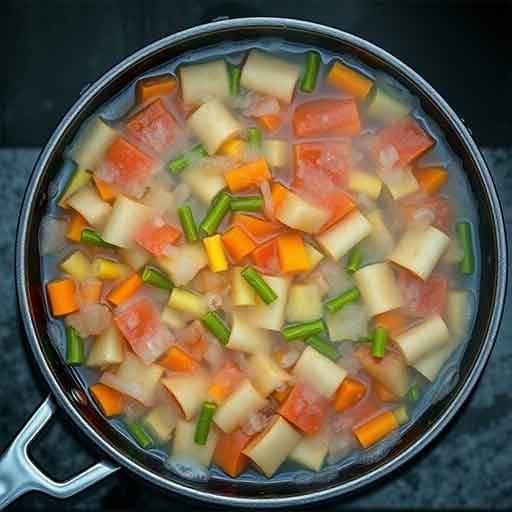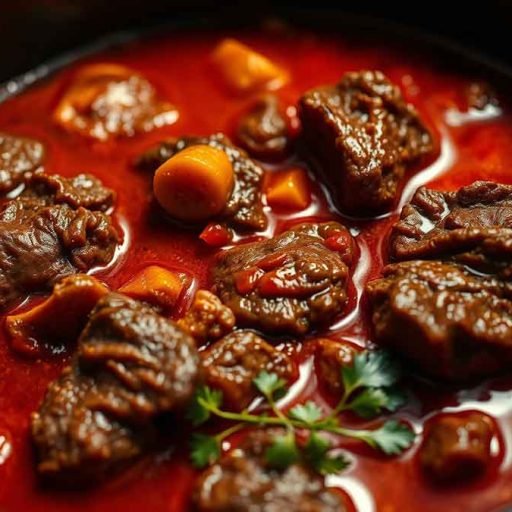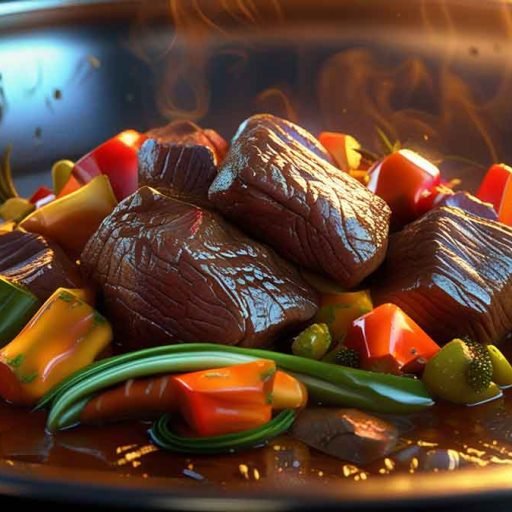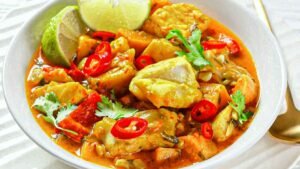Grilling is similar to broiling, grilling uses a heat source located below the cooking surface. Heat is transferred to the food via infrared radiant heat and conduction between the food and the grill rack itself. Grills can be gas, or electric, or they can Charcoal or burn wood. Solid metal pans with grooved surfaces can also be used to pan-grill foods. Grilled foods are characterized by their crusty exterior and aromatic flavors, and are often cross-hatched toward presentation.
A gas or electric grill controls the cooking temperature by adjusting the dial. When the dial is turned, the flame and heat increase or decrease almost instantly, with a charcoal or wood-burning grill, you must control the fire yourself to change the cooking temperature.
Cooking over live fire delays the time it takes for the fire to die or grow. Grilling is considered a healthy cooking method when it is used to prepare lean cuts of meat, poultry, fish, and vegetables if little or no fat is added.
Another cooking method Griddling is a dry heat cooking method closely related to grilling in which food is cooked on the hot surface of a flat solid metal grill.
How Grills Work
All grills work by generating intense heat that sears the food and creates intense flavors through a deep brown color (the grill mark). Known as “Maillard reactions,” these browning reactions are partially responsible for the bold, complex flavor of grilled food. Smoke from burning wood or coal or fat dripping onto the heat source also contributes to the distinctive flavor of grilled food.
The higher the heat on the grill, the more browning you’ll get. For this reason, the grill’s fuel or heat source is by far the biggest determining factor in how well it performs, although the material and dimensions of the grill also play a role.
Fuel is very important because different fuels require different amounts of energy to burn and different amounts of oxygen to become combustible at rates suitable for cooking. Once the grill’s fuel source is burning, however, all grills cook food through radiant heat from the fire, metal grill grates, and heat conduction through the food, and when indirect grilling, around the food. Hot air is released around. for more on the science of heat transfer.
Table of Contents
History
Older than humanity itself, grilling was the cooking technique that set our ancient ancestors on the evolutionary path to becoming civilized humans. The ability to control and control fire distinguished Homo erectus from other animals and allowed for the most basic level of purification. No wonder, then, that our desire for the taste of food charred over an open fire is practically universal.
Our ancestors would have quickly discovered that cooking over high flames is for the less advanced and that grilling over the glowing coals of a dying fire is best. No doubt they also soon discovered that starting a fire and waiting for it to burn is time-consuming. With the invention of charcoal about 30,000 years ago, primitive man learned to stop this step.
Charcoal has many advantages it burns cleaner and hotter than wood, it burns more evenly and longer than wood, and when wood is in short supply it can be made from materials other than wood’s useful properties. is For early humans, its usefulness extended beyond cooking. Slow, steady burning provided intense heat to melt and work metals, and spent coals became drawing tools for cave art that marked the beginnings of pictography. The merits of charcoal are so numerous that it is no exaggeration to say that if cooking with fire was the technology that made us human, then charcoal was the technology that gave us civilization.
Direct vs Indirect Grilling Methods
Since the grill’s temperature cannot be controlled by turning a knob like on a stove, experienced grillers have developed two basic methods of temperature control, known as direct and indirect grilling.
Direct grilling
Direct grilling is the method most people grill, in which a layer of coals is spread evenly under the food. Most people grill with a layer of coals spread evenly under the food. This allows burgers and smaller cuts of meat to cook quickly because a layer of coals provides constant heat whether the grill is open or covered.
Indirect grilling
Indirect grilling is best suited for long, slow cooking in a covered grill and is the best way to cook very thick steaks (2 and 1/2 inches or more) and other large cuts of meat. Instead of spreading one layer of coals evenly, make two piles of coals, each two to three coals deep, with space between them. Placing a thick cut over direct heat and moving it to a space in the middle of the grill allows for slow, even cooking as the grill cover circulates the heat.
Types Of Grill
There are many types of Grills available in the market but here are a few of the basic grill types
Covered Grill
Round or rectangular and available in many sizes, these grills typically have fixed racks that hold the food about six inches from the fire. When closed, the cover traps smoke, infusing the food with the outside flavor while preventing any flare-ups.
many models have vents above the lid and below the grill, making it easier to control the temperature. The most popular covered grill is the kettle-style grill, which is round with a dome, without a lid that circulates the heat evenly.
Tip: Remember to remove the lid near the end of cooking so the meat can develop a crispy crust!
Gas Grill
One feature distinguishes gas grills from all other types: fuel. Gas ignites quickly, emits a clean flame (no smoke or ash), maintains a constant but variable temperature, and can be easily shut off. According to the Hearth, Patio and Barbecue Association, these conveniences make gas grills the most popular grills in America.
Gas grills are usually made of durable steel, from the firebox to the burners, and include a hinged lid. Other features vary widely, creating a large price range from about $250 to over $10,000.
Tips: If you have a gas grill that uses canned propane, keep the spare tank full in case your first tank runs out while cooking.
Hibachi Grill
This is where the all-important Firebox comes in handy. While campfire and fireplace grills rest on an open flame on a flat surface, every other grill confines the flame to a firebox that is above the ground. Used in Japan for thousands of years, a hibachi looks like a deep, heavy-duty tray with a grill grate on top. The best models provide heat control with adjustable grill grates, air vents on the sides of the firebox, and a raised fire grate to allow oxygen to flow under the coals. Most hibachis are charcoal-fired, but some modern versions are gas-powered or electric.
Cooking space is usually limited to 100 to 200 square inches, so hibachis are best over direct heat for vegetables, burgers, kebabs, steaks, and boneless chicken portions. They provide inexpensive ($20 to $75), portable, tabletop grilling for decks, patios, and balconies. You can buy or rent much larger versions, called table grills. These large hibachis rest on long legs that raise the firebox to counter height and provide plenty of space to cook dozens of burgers or steaks at once. Some models also come with a rotisserie setup for whole birds and roasts. You’ll often see table grills at outdoor festivals where large quantities of quickly grilled food are served.
Tip: When using a hibachi, place the pieces of food close together (almost touching) so that the entire grill surface is covered and valuable heat is retained.
Charcoal Grill
Fueled by charcoal briquettes or pieces of natural hardwood charcoal, charcoal grills are, on the whole, less expensive than their gas-powered brethren. Look for a charcoal grill made of heavy gauge steel. A porcelain enamel coating will give you better protection against rust. Strong legs will keep the grill stable. Other features you can find in a charcoal grill include plated steel, pre-made – cast iron, or porcelain cooking grates, adjustable height fire grates, side shelves and bottom storage, and warming racks. , temperature gauges, and a removable ashtray for easy cleaning.
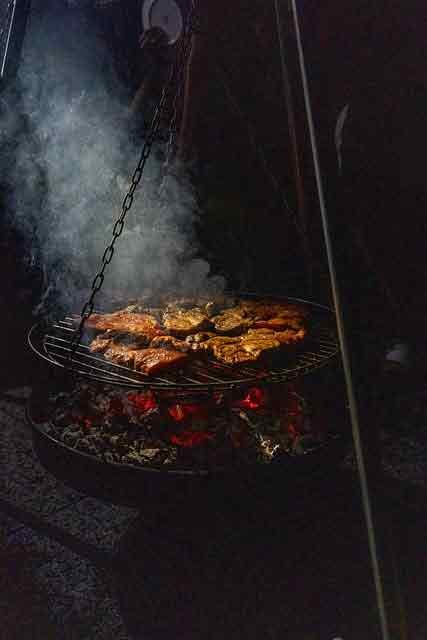
Like gas grills, you can find a charcoal grill in whatever size suits your needs. If you’re cooking for one or two, consider a hibachi, a small cast-iron grill that’s perfect for a pocket-sized patio.
Electric Grill
Instead of a flame, a metal coil serves as the heat source for these inexpensive grills ($50 to $100). Otherwise, electric grills generally resemble habaches and are designed for the same purpose: quickly cooking small amounts of small or tender foods over direct heat. Some models have lids and can be used outdoors, but most are designed for simple, indoor grilling.
The heating coil is usually tucked under the cooking grate, but on newer models, the heating element is built into the cooking grate, which limits flare-ups and smoke. The heat is easily controlled with a knob that increases or decreases the flow of electricity. Almost any food that can be grilled over direct heat on a charcoal or gas grill can be cooked on an electric grill, including the recipes in this book. In this case, most grill recipes will work just as well under a broiler using direct heat (minus the grill marks).
Campfire Grill
These inexpensive grills ($10 to $50) consist of a cast iron or steel cooking grate designed to sit over a wood-burning fire. Adjustable height grates are attached to a stake or two T-shaped legs to suspend the grate over the fire. As with all grills, there are great models.
Strong, stable, and durable, but campfire grills must also be easily portable. The heat is controlled by the amount of coals you place under the cooking grate and by adjusting the grate up or down.
Fireplace Grill
Like campfire grills, fireplace grills (also known as Tuscan grills) are designed to fit into a more limited fireplace area. These grills don’t always have adjustable grill grates, so make sure the grate will be at least 4 to 6 inches higher than the coals in your fireplace.
Fire Bowl
A modern cross between a campfire ring (a circular enclosure for fire) and a hibachi, the fire bowl is designed for enjoying a wood fire as well as cooking over it. It consists of a large, shallow metal bowl (usually cast iron or copper) about 20 to 40 inches in diameter, with short legs that support the bowl from the ground.
Cooking grates often cover only half of the bowl so that the fire can be easily fueled from one side and hot coals can be thrown to the other side for cooking. Like hibachis, fire bowls are great for quick grilling on decks and patios, but they’re not as portable and cost a bit more.
Kettle Grill
This bowl-shaped grill has become an icon of charcoal grilling in America. The Weber Stephen Products Company, which originated the design, also trademarked it, but several other manufacturers make similar grills. A kettle grill has one major advantage over hibachis and fire bowls: its lid. Without a lid, a kettle grill acts like a tall fire bowl or a large, round hibachi with a cooking surface (the deep bowl-shaped top also helps protect the coals from the air).
But with a domed lid, a kettle grill can act more like an oven than a grill. Put the lid on and you can keep the heat in a sealed environment so it surrounds the food instead of coming up from the bottom. And if you place hot coals on one side of the firebox and the food on the other (called indirect grilling), you can “grill roast” whole birds and large cuts of meat so they’re cooked in the center and cooked through. turn brown Surfaces beautifully without burning.
Most kettle grills don’t have adjustable height grill grates, so the heat is controlled by the thickness of your coal bed, the bottom of the firebox (or fire bowl, really), and the vents in the lid. Again, the lid is key because it allows you to place the lid’s vents on the opposite side of the fire bowl’s air vents to allow heat and smoke to flow from below, across the food, and then out the opposite side of the lid.
Be thrown out. On the side it also allows you to add wood chips to the hot coals in the kettle grill, increasing the smoke and turning the grill into something closer to smoking For the money, the charcoal kettle grill is one of the most versatile outdoor cookers available today. Some models are also available with a “gas assist” feature that quickly ignites the charcoal with a burst of gas but uses coals for cooking. The cooking area ranges from 14 to 24 inches in diameter, with prices ranging from $50 to $350.
Barbecook Grill
This stainless steel charcoal grill looks like a sleek kettle grill on a pedestal. It has many of the same features as a kettle grill, with the benefit of a built-in chimney starter to quickly light coals with newspaper. It is one of the most popular charcoal grills in Europe and ranges in price from $200 to $800.
Ceramic Grill-Oven
Modern ceramic grills are based on two ancient designs: the Indian Tandoor and the Japanese Kumado. These are charcoal-fired clay ovens, but the bell-shaped oven is open at the top, while the egg-shaped kumados have a tight lid. The charcoal and heat-retaining clay in the oven generate intense heat (up to 700°F) that quickly consumes food. In Kamado, the heat-retaining properties of the clay and lid are used to slow-roast food at low temperatures (up to 200°F).
Modern versions of these charcoal grill ovens are made of thicker, heavier ceramic and are shaped like an egg, like a kamado. Heat-retaining ceramic makes for an efficient slow cooker, allowing you to use less coal and produce less heat for longer. The airtight lid traps heat and moisture, keeping the whole bird and roast moist. Add wood as fuel, and these cookers become efficient smokers. Ceramic grills typically have a cooking area of 10 to 20 inches in diameter, but the vertical space allows you to add a second grill grate below the first. Two popular brands are Primo and Big Green Egg.
Pit Grill or Smoker
Note that our description of various wood and charcoal cookers has expanded from “grill” to “grill-oven” to “grill or smoker”. There’s a big gray area between grilling and smoking, but here’s the main difference: Grills cook food quickly using relatively high, direct heat, and smokers use relatively low, indirect heat and lots of wood smoke. Cook using A pit grill or smoker is designed expressly for smoking (or barbecuing), in which the food is cooked not so much by the radiant heat of the coals as by the wood smoke produced by those coals.
From relatively cool heat. To achieve this goal, the firebox on a pit grill or smoker is often located in a separate chamber from the cooking chamber. The cooking chamber is often in the form of a horizontal barrel, as these cookers were (and are) originally made from steel barrels. But any deep shape (pit) that allows heat to circulate the food can be used as a smoker.
Some pit grills and front-loading grills allow both direct heat grilling and indirect heat smoking. The available cooking space on these grill smokers is usually between 500 and 800 square inches, but barbecue caterers may use larger rigs with three to four times that amount of cooking space.
A typical backyard steel barrel smoker burns charcoal or wood, costs $200 to $500, and has enough space for a rack of beef brisket or a whole suckling pig. It happens. Like a kettle grill, heat is adjusted with a lid and vents. We should mention here that some water smokers can be powered by electricity instead of wood or charcoal which are not meant for grilling. These dedicated smokers are usually manufactured in a vertical cylindrical shape and include a water pan to keep the food moist during smoking.
Contact Grill or Grill Pan
Another option for indoor cooks, there are contact grills and grill pans that share the firebox completely. A contact grill looks like an electric waffle iron with a grill grid. George Foreman Girl is a famous model. Preheat the griddle, add the food, and close the top, and the heated top and bottom grids create nice grill marks on your food. Grill pans have the same effect, although they only cook from the bottom and are heated by the burners on your stove.
Food “grilled” on a contact grill or grill pan has a completely different taste and texture than food cooked on outdoor charcoal and gas grills because the heat is not as intense, there is no smoky flavor, and the cooking moisture is retained. As the food cooks on the surface, it creates a hybrid cooking method somewhere between grilling, sautéing, and steaming. Contact grills and grill pans range in price from $20 to $120.
Why Gas or Charcoal Grill is best?
Different grills have different purposes. No doubt, there is a grill out there that’s built just for you, but it’s also possible that you will see the benefits in more than one model. Three things distinguish most grills from one another.
If you’re debating whether to buy a gas or charcoal grill, consider the bottom-line benefits of each: Charcoal is more hands-on and gives you slightly better flavor. Gas is more automatic and convenient. You decide your preferences and personality. Regardless of the type of grill you buy, some features are standard and optional for each. Here is a short list of basic and optional features for both gas and charcoal grills.
Standard Features
- Solid, stable construction with sturdy legs, handles, and wheels
- Metal grill grates are made of cast iron or stainless steel, both of which sear better and are easier to clean than porcelain enameled grates
- Built-in thermometer
- Warranty
- Adjustable air vents on the lid and firebox for heat control (charcoal only)
- Easy-to-use ash catcher (charcoal only)
- Easy-to-use grease catcher (gas only)
- Heat diffuser, made of stainless steel bars, lava rock, or ceramic briquettes (gas only)
Optional Features
- Tight-fitting lid, strongly encouraged for indirect grilling
- Side tables
- Storage shelf or cabinet
- Tool hooks
- Warming rack
- Adjustable-height grilling grate
- Rotisserie setup
- Hinged grill grate for replenishing coals, strongly encouraged for indirect grilling (charcoal only)
- Side baskets for containing coals when indirect grilling (charcoal only)
- Minimum of two burners, encouraged for indirect grilling (gas only)
- Smoker box with smoker burner (gas only)
- Gas gauge (gas only)
- Side burner (gas only)
How To Choosing a Grill?
While there are many different types of grills, there are only three key factors involved in choosing the best one for you.
Size
Your grill should be large enough for the amount of food you will typically cook on it.
Condition
Your grill should stand securely and neither the firebox nor the grill rack should rust.
Preference
Many experts have different opinions on the best type of grill. Some prefer a small tabletop grill while others prefer a waist-high grill. While each type has various advantages, the most important thing is using a grill that you enjoy and trust.
Grill Equipment and tools
Cooking over fire requires certain tools, and there are optional gadgets to grill fish, kebabs, etc easily. Here are the basics and some extras.
Grill Equipments for Food
Grill Basket/Fish Basket
Using baskets isn’t cheating, it’s common sense. There’s no easier way to cook small vegetables or a whole fish or fillets than with one of these handy wire contraptions.
Grill Topper
If you often grill delicate foods like seafood and vegetables, you’ll want a grill topper, a perforated metal sheet, tray, or basket that provides a nearly flat surface for grilling. Food is less likely to break or fall apart, and you can practically “stir-fry” chopped food over the flames.
Tongs
It is better than a fork for turning food because they do not pierce the surface and release juices. Barbecue tongs should have heat-proof handles and rounded ends that won’t cut into food.
Spatula
Use a long, heatproof handle to flip burgers and move food around on the grill topper.
Skewers
Long metal skewers are perfect for kebabs. Choose skewers with flat shafts instead of round ones. Food will be less likely to slide or roll when you turn the skewer.
Thermometers
Consider two different types of thermometers for grilling ease. The first measures the internal temperature of the food you are cooking. You can do this with an instant-read thermometer, inserted into the center of the food when you think it’s close to done. There are also digital thermometers that consist of a probe that is inserted into the food as it heats up and connected to a device that sits next to the grill and continuously reads the temperature.
Another type of thermometer is a grill surface thermometer, which measures the heat of the fire. When you cook with charcoal, it takes the guesswork out of whether you have a fire or medium. This is especially useful when you’re cooking “low and slow,” which requires you to maintain a constant temperature for several hours.
Equipment for the Grill
Grill Brushes, Scrubbers and Scrappers
Basic cleaning tools and grill scrapers come in a variety of styles. Look for large-headed brushes with long handles and stiff bristles for easy cleaning of grill grates. Stainless steel should only be cleaned with a brass brush as a steel brush can scratch its surface.
Iron grates can be cleaned with any metal brush. Many brushes have metal scrapers on the end of the head to remove stubborn debris. A V-shaped brush or scraper makes it easy to clean individual bars on the grill grate. Scrubbers are similar to scouring pads designed to clean the firebox and lid (or grill grate).
Basting Brush
A heatproof handle and a long shaft brush are two definite musts. As for bristles, silicone is the way to go it’s nearly indestructible and has the added benefit of being non-stick, making cleanup a snap. Your next best bet is a brush with natural bristles, which will stand up to heat better than silicone plus synthetic bristles.
Coal Rake
Use it to quickly extract coals in beds of different thicknesses and heat levels. Most rigid garden racks are too tall and bulky for a typical kettle grill. A children’s garden rack is just the right size.
Grilling Mitts AKA Grill Gloves
A more serious version of oven mitts, these are longer and better insulated to protect more of your arm from overheating. Heavy suede mitts are best.
Brass-Bristled Scrub Brush
Use this to clean the grill rack. The best time for this? While the grill is still hot.
Grill Lamp
These lamps clamp to the side of your grill and often have adjustable necks to put the light where you need it. Some require an outlet and extension cord, while others are battery-operated. You can also use an inexpensive work lamp from a hardware store. Or look for a handle lamp, which replaces the handle on your gas grill with a built-in light.
Coal Poker
It’s not strictly necessary, but you might like it if you grill in a wood-burning grill, over a campfire, or in a fireplace. Look for a long coal poker, metal, and curved at the end so that coals and logs can be easily repositioned.
Coal Shovel
A small shovel allows you to easily shovel hot or spent coal and ash from the firebox. Again, a kid-sized metal garden shovel works best for backyard grills. But the bigger the grill, the bigger the coal shovel should be.
Disposable Aluminum Pans
Disposable aluminum pans have multiple uses on the grill: a drip pan to catch grease; a roasting pan to retain juices for making pan sauce; a sauté pan for simmering food in a liquid, such as boiled shrimp or a brat in beer; a warming container for fried food; and a soaking container for wood chips or scraps or bamboo skewers. Keep several sizes on hand.
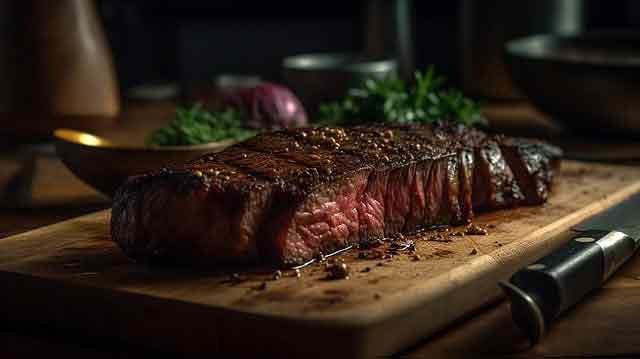
Grill Tools for Flavor
Basting Brush
Need to level up the flavor in your food? Brush it with a basting brush, whether it’s a baste, glaze or sauce. Natural bristle brushes won’t melt on the grill like nylon will, and they work well with all bastes, glazes, and sauces. Silicone brushes work best with thick sauces because the thin bast slides right off the silicone bristles. Long-handled basting brushes protect your hands, but we often baste with short-handled natural bristle paint brushes from the hardware store.
Grill Mop
Resembling a small kitchen mop, this tool is useful for squeezing or drizzling a thin mop sauce over large cuts of meat, without any seasonings that may already be present. Barbecue caterers, restaurateurs, and competitors actually use full-size kitchen mops to accommodate their large quantities of food. Hence the name.
Spray Bottle
These standard, readily available plastic bottles complete with a nozzle and hand pump are useful for sprinkling flavored liquids over slow-cooking foods to keep them moist and deepen their flavor.
Injector
A marinade injector (also called a kitchen syringe) looks like a large hypodermic needle. There is no easy way to infuse flavor into meat muscle tissue. Any flavored liquid can be used, but those without solids work best because they don’t clog the needle. Metal ones last longer than plastic models.
The Best Fuels for Grilling
Those who use charcoal grills may be surprised at the variety of fuels available in the average supermarket. While most charcoal will work in a pinch, there are clear differences between different types:
Hardwood Lumps
The Lobel family’s fuel of choice, hardwood lump charcoal (also known as natural charcoal) burns hotter, longer, and cleaner than standard briquettes. Made from hardwoods such as oak, maple, cherry, mesquite, and hickory, natural charcoal is perfect for its irregular shape.
Hardwood Chunks
Grillers looking for a distinctly woody flavor should experiment with hardwood chips, which are simply pieces of hardwood that have not been compressed into charcoal. Hardwood chips provide a distinct woody flavor that doesn’t take much longer than charcoal to get hotter than coal and burn faster, smoky, and at a lower temperature.
Standard Briquettes
Similar in shape to hardwood lump charcoal and less expensive, standard briquettes burn slightly faster and cooler. However, they burn evenly and cleanly and are a suitable fuel source for grilling.
Fuels Not to Use
Despite being convenient, self-lighting briquettes are saturated with chemicals that give food an oily, unpleasant taste. Lobels also advises against using very cheap charcoal because they are often made with inferior fillers such as sawdust, which makes them dirtier and burn more quickly than other types of fuel.
Best Woods to Flavoring the fire for grilling
The delicious taste of food cooked over flames makes grilling a popular method of cooking. You can enhance the effect by adding flavor to the fire, or more specifically, the smoke it emits. It works best in a covered grill, which keeps the smoke inside. Aromatic woods, such as mesquite or hickory, are popular for adding tang to grilled meats. Herbs, spices, and other cooking ingredients such as lemon peel or whole garlic cloves add their flavors when placed in a smoker or over the fire.
Alder
Alder is a light wood from the Pacific Northwest that works well with seafood, poultry, and light game.
Sugar Maple
Often found in the Northeast and a staple on the competition scene. It is smoky and mellow. Mix it with a piece of fruit wood for an interesting flavor combination. Works well with poultry, and cheese.
Hickory
Hickory is a popular wood that adds a hint of bacon flavor to your baked goods. Goes well with beef.
Mesquite
Mesquite is traditionally associated with Texas barbecue. Works well with beef. Use a little at first, as mesquite can overpower other flavors.
Apple
Light, subtle, fruity flavor. Perhaps the most common of fruit woods, apple lends itself well to chicken.
Peach
Think of this fruit wood as a lighter version of hickory. Excellent with white and pink flesh.
Cherry
Cherry wood creates a sweet-tasting smoky flavor that’s great with poultry. Cherrywood also gives a great color to poultry
Walnut
It’s a heavy flavor that lends itself more to beef or poultry. Walnut can be bitter if used alone and is used with fruitwood.
Pecan
Good wood all around for smoking. It has a sweet and mild flavor similar to hickory.
Grinding wood is sold in chunks or chips to be thrown onto a charcoal fire or in foil packets or gas grill smoker boxes. You want the wood to smoke slowly, not burn quickly, so soak the chips in water for 30 minutes before adding them. Large pieces should be soaked for two hours.
If you have a gas grill, use wood chips, not chunks. If your gas grill doesn’t have a smoker box, wrap the chips in heavy-duty foil, poke some holes in it, and place it on top of the flavor bars.
If you’re using a charcoal grill, add wood chips to the fire right from the start. Place the chips on the coals later in the cooking process.
Whole spices or fresh or dried herbs can be placed in a smoker or over the fire, or used with lemon or orange peel or whole garlic cloves. Soak them for about thirty minutes before using them. Fennel is traditional for seasoning fish, while rosemary, thyme, bay leaves, and cayenne pepper are other options.
How to Lighting the Coals for Grilling
There are several ways to light coals for grilling
Chimney Starter
Using this sturdy, cheap metal cylinder is one of the most popular ways to light coals. Stack charcoal in the large, top part of the fireplace, fill the bottom with crumpled newspaper, and light the paper. The coals will ignite as the heat from the paper fire sweeps the chimney. When the top layer of coals is covered with ash, put them in a firebox and arrange them.
Electric Starters
Spread the briquettes in the grill’s firebox, lay the starter’s looped heating element on top of them, pile more briquettes on top, and plug the starter into an electrical outlet. When the coals begin to smoke, remove the starter and pile the coals until they are all covered with gray ash.
Solid Starters
These small blocks of compressed wood fibers are saturated with flammable chemicals and ignite quickly. Unlike self-lighting briquettes, solid starters do not contain enough chemicals to affect the flavor of the food.
Chimney Starter
Also known as charcoal lighter fluid, it is America’s most popular ignition agent. However, liquid starters can be hazardous as impatient grill chefs can ignite them by sloshing them over already-burnt coals. To use properly, stack the briquettes in the center of the firebox and dose with the starter, waiting a minute for the liquid to penetrate the coals before striking with long matches. Never allow children to use liquid starters.
Ignition Points for Grilling
| Fule | Temperature(F) |
|---|---|
| Lighter Fluid | 300 °F |
| Match Heads | 325 °F |
| Carbon Dust | 350 °F |
| Paper | 435 °F |
| Wood Shavings | 500 °F |
| Charcoal | 600 °F |
| Solid Wood | 800 °F |
Control the Heat
Most gas grills come with a thermometer or gauge to help you. Control the heat. For gas grills without a thermometer or charcoal grills, You can easily measure the temperature by holding your hand. About 3 to 4 inches above the grates and count the number of Seconds you can withstand the heat.
| Temperature | Thermometer | Hand Check |
|---|---|---|
| High | 400°F to 450°F | for 1 to 2 seconds |
| Medium-High | 375°F to 400°F | for 2 to 3 seconds |
| Medium | 350°F to 375°F | for 3 to 4 seconds |
| Medium-Low | 325°F to 350°F | for 4 to 5 seconds |
| Low | 300°F to 325°F | for 5 seconds or more |
Safety Tips for Grilling
There’s nothing like outdoor grilling. This is one of the most popular cooking methods. But, a grill placed too close to anything is a fire hazard. They can become very hot, causing burn injuries. Follow these simple tips and you’ll be on your way to safe grilling.
- Propane and charcoal BBQ grills should only be used outdoors.
- The grill should be placed well away from the house, deck railings, and outside and overhanging branches.
- Keep children and pets at least three feet away from the grill area.
- Keep your grill clean by removing grease or fat buildup from the grills and putting it in trays below the grill.
- Never leave your grill unattended.
- Make sure the grill is on level ground and not too close to the house, trees, fences, or even deck railings—all can catch fire from sparks or flying sparks.
- Do not line the bottom of a gas or charcoal grill with foil. This will block the flow of air, and the fire will go out faster.
- Use lighter fluid only for ignition. Do not throw it on hot coals to rekindle a dying fire, as it may ignite the canister when you add it.
- We can’t say this too often: Reduce the risk of cross-contamination and food poisoning by transferring cooked food from the grill to a clean plate, not food containing raw meat, fish, or poultry.
- Boil used marinades and glazes for 2 minutes if you want to serve them with cooked meat. Store in a separate dish before coming into contact with meat, fish, or poultry.
- Use a long-handled barbecue pot (not your regular kitchen set) for good access and control. And watch out for hanging sleeves.
- Be careful not to serve undercooked meat, poultry, or fish.
- Do not throw water on fire. It produces steam, which can cause severe burns. Instead, remove the food from the grill until the heat is reduced, or cover the grill for a few minutes. To prevent flare-ups, trim excess fat from the meat.
Safety Tips for Charcoal Grills
- There are several ways to prepare charcoal for use. A charcoal fireplace starter allows you to start the charcoal using newspaper as a fuel.
- If you use starter fluid, use only charcoal starter fluid. Never add charcoal fluid or any other flammable liquid to a fire.
- Keep charcoal fluid out of reach of children and away from heat sources.
- There are also electric charcoal starters, which do not use fire. Be sure to use an extension cord for outdoor use.
- When you’re done grilling, let the coals cool completely before cooling in a metal pan.
Safety Tips for Propane Grills
Check the gas tank hose for leaks before first use each year. Apply a mild soap and water solution to the hose. A propane leak will release bubbles. If your grill leaks gas, by smell, or by the soap bubble test, and there is no flame, turn off the gas tank and grill. Suppose the leak stops have the grill serviced by a professional before using it again. If the leak does not stop, call the fire department. If you smell gas while cooking, move away from the grill immediately and call the fire department. Do not move the grill.
Grilling Tips
- To avoid worrying about timing when you’re ready to grill, prepare as many of your ingredients as possible in advance.
- Allow plenty of time for meat and fish to come to room temperature after taking them out of the fridge. Do not cook cold in the refrigerator.
- Braise fatty or tough cuts in advance to reduce time on the grill. Add ingredients such as liquid smoke to the braising liquid to maximize flavor.
- Avoid using too many citrus or other acidic ingredients in your seafood. Instead, add lemon after grating for flavor to ensure the fish is tender and the shellfish meat is not dry.
- Keep your grill out of the wind, and make sure it’s level and stable. Equip yourself with a spray bottle full of water to extinguish potential flames.
- Place a layer of heavy-duty aluminum foil under the coals. This makes it easier to clean the ash later.
- Charcoal briquettes are ideal when grilling large cuts of meat, while regular charcoal is better for smaller cuts, fish, and vegetables. Half-burnt briquettes can be saved for another time.
- Clean and oil the grill every time you use it. Waiting until it warms up makes scrubbing easier.
- Allow the light fluid to absorb for at least five minutes before lighting.
- Add a few bunches of fresh herbs over the coals. The smoke will provide a lot of extra flavor and aroma.
- Heat the grill as high as you can, and don’t start cooking until the coals are the color of a gray wool sock, usually 20 to 30 minutes after lighting.
- Reserve a portion of your grill surface for indirect cooking, depositing fewer coals there to ensure lower temperatures. This will allow you to transfer the food when it is dry. Indirect grilling is also great for larger cuts of meat.
- Grilling with a lid ensures an even temperature.
- Dry the marinated pieces before placing them on the grill. Otherwise, the oil will explode and may catch fire.
- Cut slits in the fat sides of the chips so they are flat and even.
- Brush the burgers and patties with oil so they don’t stick to the grill.
- Use the grill cage when barbecuing small pieces of fish or vegetables.
- Flip as many times as possible. To get a perfect golden brown crust, turn only once.
- Avoid the temptation to crowd the grill or it won’t reach a high enough temperature.
- A good meat thermometer is just as useful for the barbecue as it is for the oven.
- Let your meat rest briefly before slicing to ensure the juices are locked in.
Checking for Doneness during Grilling
The best way to tell if a piece of meat is cooked is to use an instant-read thermometer. You’d be lost without me. Insert a thermometer into the center or thickest part of the meat, poultry, or fish to get the internal temperature. Make sure the tip of the thermometer doesn’t touch any bones. Here is the chart
| Meat | Blue | Rare | Medium Rare | Medium | Medium Well | Well Done |
|---|---|---|---|---|---|---|
| Beef Steak | 120°F | 125°F | 135°F | 145°F | 155°F | 170°F |
| Beef Roast | 115°F | 125°F | 135°F | 145°F | 155°F | 400°F |
| Beef Tough Cuts | 155°F | 170°F | ||||
| Ground Beef | 150°F | 160°F | ||||
| Lamb Chops | 120°F | 125°F | 135°F | 145°F | 155°F | 170°F |
| Lamb Roast | 115°F | 125°F | 135°F | 145°F | 155°F | 400°F |
| Lamb Shoulder | 155°F | 400°F | ||||
| Ground Lamb | 150°F | 400°F | ||||
| Poultry | 170°F | 400°F | ||||
| Fish | 140°F | 150°F | 400°F |
How to Grill Fish
These are the most common fish for grilling
| Fish | Shape | Description | How to Grill |
|---|---|---|---|
| Bluefish | Round | Soft, Dark meated, fatty, strong flavor, Vary in size | Large: Indirect Medium-High heat Small: Direct Medium-high heat |
| Catfish | Round | Freshwater, pale flesh, meaty, firm, sweet | Fillet: Direct Medium-high heat |
| Cod | Round | Large, Lean, firm, flesh, White meat, large flakes, mild | Steak: indirect Medium-high heat |
| Dolphin | Round | firm- lean, large flakes, white meat, sweet flavor | Direct Medium-high heat |
| Eel | Round | Fatty, fine Flake, Rich | Skinned: Direct Medium heat |
| Flounder | Flat | White, lean, delicate flake, mild | Direct Medium-high heat |
| Halibut | Flat | Large Flounder | Direct Medium-high heat |
| Herring | Round | Rich, Delicate flake, Dark, Assertive flavor | Boneless fillet Direct High heat |
| Mackeral | Round | Rish, Delicate flake, dark, assertive flavor | Fillet: Direct Medium-high Heat |
| Monkfish | Round | Only eat tail, Meaty, White flesh, sweet flavor | Indirect Medium-high heat |
| Pompano | Round | Mild, Flaky, sweet flavor | Direct Medium heat |
| Red Snapper | Round | White meat, Sweet, Larg flakes, mild | Indirect Medium-high heat |
| Salmon | Round | Red to Pink flesh, rich, assertive flavor, wild has less fat than farm raised | Whole indirect Medium heat Fillet or steak direct Medium-high heat |
| Shad | Round | Rich, delicate flake, dark, assertive flavor | Boneless fillet direct Medium-high heat |
| Striped bass | Round | White, large flakes, mild, sweer | White, large flakes, mild, sweet |
| Stugeaon | Round | Very large, firm flesh, rich, meaty | Medallion Direct Medium heat |
| Swordfish | Round | Dark meat, firm, meaty, assertive flavor | Steaks direct medium heat |
| Tuna | Round | Dark red, Meaty, Firm, assertive | Steaks Direct Medium-high heat: cook only to rare |
| Turbot | Flat | Large Flounder | Direct Medium-high heat |
| Trout | Round | Freshwater, meaty, tender, whole fish | Direct Medium-high heat |
How to prepare fish for Grill
for now, let’s prepare the salmon. Combine sugar, salt, and pepper in a small bowl. Dry the salmon with paper towels. Brush the flesh side of the salmon with oil and sprinkle with a sugar mixture. Using 4 large sheets of heavy-duty aluminum foil, fold the edges of each sheet to make 4 trays, each measuring 7 x 5 inches. Using the tip of a paring knife, make several small slits in the bottom of each tray. Divide the wood chips evenly between the trays and place 1 flat skin side down on top of the wood chips in each tray.
Charcoal Grill
Vent the pen completely down. Light large fireplace starter filled with charcoal briquettes (6 quarts). When the top coals are partially covered with ash, pour evenly onto the grill. Set the cooking grate in place, cover it, and open the lid completely. Heat grill until hot, about 5 minutes.
Gas Grill
Turn all burners to high, cover, and heat the grill for about 15 minutes. Leave all burners on high.
How To Grill Salmon
- Place the tray with the salmon on the grill and cook.
- covered, until the center of each fillet is still translucent when checked with the tip of a paring knife and registers 125 degrees (for medium-rare), about 10 minutes.
- Remove the tray from the grill.
- Slide a metal spatula between the skin and flesh of the fish and transfer to a platter.
- Serve.
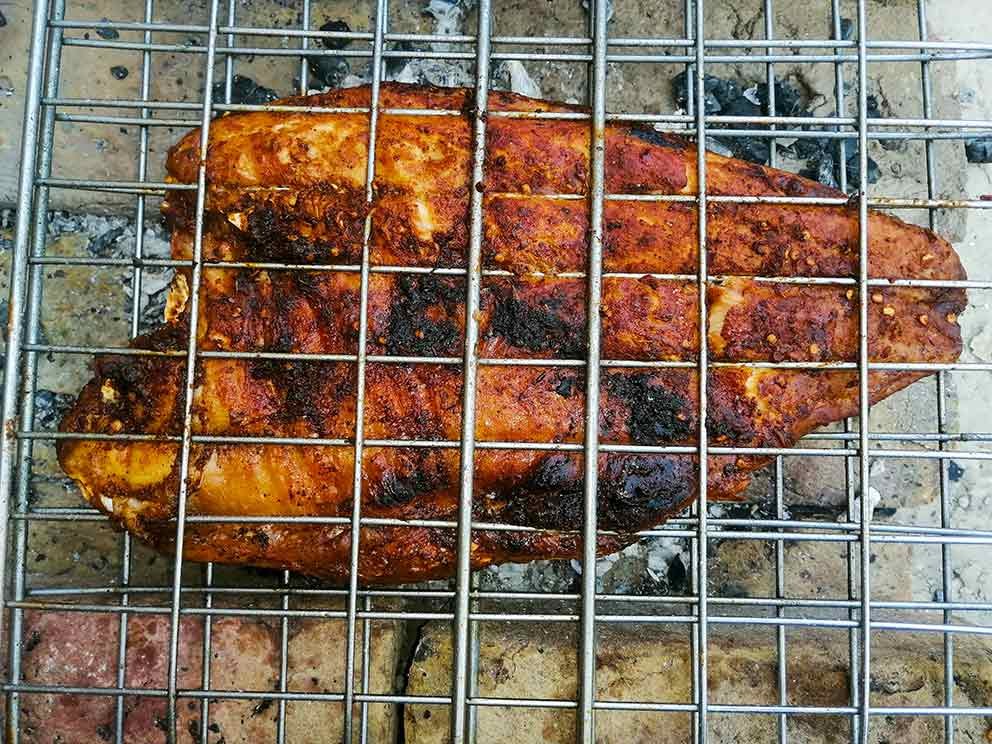
What fish is best for grilling?
Salmon, trout, Tuna, Swordfish, Snapper, Halibut, Catla, Wallago Attu, and Damra fish are the best fish to grill. Always purchase fresh fish for a better taste and texture.
What is the best fish to grill whole?
The Best Fish to Grill Whole is Red Snapper and Catla. It’s a perfect size for grilling and has a clean, fresh flavor without being “fishy“.
What is the best use of a grill basket?
A Grill Basket is best for thin and small vegetables that can easily fall between the grates of the grill. A grill basket is best for small and large fish fillets even whole fish. you can use a grill basket during camping.
Do you need a fish basket to grill fish?
Yes, you can use a grill basket for fish, especially for small fish. But there is no strict rule for using a grill basket. The advantage of a grill basket is that you can quickly turn the sides of the fish and prevent the fish from falling apart.
What are the health benefits of grilled fish?
fish is the main source of omega-3 a fatty acid and vitamins such as D and B2. One thing why I love grilled fish is no need for extra oil to cook the fish which is very beneficial for health. charcoal helps to make the fish’s texture crispy and smoky flavor. fish release oil while grilled so you need not use extra oils to cook fish. this fish oil is beneficial for health
Is it better to fry or grill fish?
This depends on your mode of living and personal or health preferences. another factor is the type of fish. I prefer grilled fish over fried fish due to the taste and health benefits. grilled fish is easy to digest.
